Education
EPA Approved Institutional Disinfectants For Viruses And Bacteria
/in Education, Industry News/by adminIntroduction
In our last post, we presented an infographic briefly detailing how long the Coronavirus could live on various surfaces: metal, glass, plastic, etc. In this post we’ll talk about what commercial disinfectants are available that can kill the Coronavirus on non-porous surfaces. As of April 16, a total of 374 commercially available surface disinfectants have been approved by the Environmental Protection Agency (EPA) for use against the SARS-CoV-2 virus¹. The majority of these products are certified for healthcare, institutional, and residential use. These chemicals fall under the category of pesticides and are regulated by EPA as part of the so-called “List N” products. Hand sanitizers, antiseptic washes and antibacterial soaps are not regulated by the EPA and instead fall under the purview of the the Food and Drug Administration (FDA).
Surface disinfectants should NEVER be applied to your skin or ingested.
Unless otherwise noted the following applies to all surface disinfectants listed in this article:
- Each Disinfectant has an EPA registration number and is approved for use against SARS-CoV-2.
- Each Disinfectant has an “emerging viral pathological claim,” meaning each disinfectant is effective against “harder-to-kill” viruses than just human coronavirus.
- Disinfectants can be used for healthcare and institutional sites.
- Disinfectants can be used on all hard, non-porous surfaces such as stainless steel, countertops, handles, fixtures, glass, plastic, etc.
- Disinfectants have been approved by the EPA as of April 16, 2020.
Terminology
- Contact Time: The maximum amount of time in minutes that it will take the disinfectant to kill the virus. Some products may take as long as ten minutes to be effective, whereas others, such as Dodecylbenzenesulfonic acid products are extremely fast-acting and can kill the virus in less than half a minute.
- Use Site (Indicates where the disinfectant can be used):
- Healthcare: Hospitals, dental offices, nursing facilities
- Institutional: Schools, office buildings, big-box stores, grocery stores, restaurants
- Residential: Homes
- Formulation Type:
- RTU: Product is “Ready-to-Use”. Disinfecting wipes fall into this category. Liquid products may be diluted according to manufacturer instructions.
- Dilutable: Product may be used at full strength or diluted according to manufacturer instructions.
- Active Ingredient: Hydrogen peroxide, Quaternary ammonium, Sodium Hypochlorite, etc.
- Emerging Viral Pathogen Claim: Is the disinfectant effective against a harder-to-kill virus than human coronavirus? All products listed in this article qualify as effective against emerging viral pathogens.
- Effective Against: Those harder-to-kill viruses that the product is effective against, other than human coronavirus.
EPA SARS-CoV-2 Disinfectant Certification Procedures
You may have noticed that many companies already have a bevy of powerful disinfectants on the market, almost all of which are classified as effective against harder-to-kill viruses than Coronavirus. But, nevertheless, they all still need to be recertified against SARS-CoV-2 protocols. Here is how that works. A disinfectant is submitted to the CDC via disinfectantslist@epa.gov. It is then tested. EPA expects the surface disinfectant to kill the virus if it meets the following criteria:
- Demonstrates efficacy (e.g. effectiveness) against Coronavirus, or a harder-to-kill virus
- Demonstrates efficacy against another type of human coronavirus similar to SARS-CoV-2
- Surface disinfectant can be used to kill like viruses on non-porous surfaces such as metal, glass, plastic, counters, fixtures, doorknobs, etc.
Each surface disinfectant product on List N has either been tested specifically against SARS-CoV-2 or a more robust facsimile, i.e., a harder to kill virus. If the disinfectant is approved, the product will be added to the list during the next EPA update. Because SARS-CoV-2 is a new virus, this pathogen is not readily available for use in commercial laboratory testing to see if a certain disinfectant product is effective at killing the virus. This is a novel virus, meaning the scientific community has not seen this before. That’s why there are no certifications prior to March, 2020, hence why all the certifications on the EPA List N are dated post March 1, 2020.
Newly Approved List N Disinfectants For April 2020
The following is an abridged list of newly approved List N disinfectants for use against SARS-CoV-2 which were approved during the month of April, 2020. Click here for a complete list of EPA approved SARS-CoV-2 surface disinfectants².
Notice any ordinary household products in the list below – like Windex – something just about every household has under the sink.
| Active Ingredient(s) | Product Name | Company | Effective Against | Contact Time (minutes) | Formulation Type |
| Hydrogen peroxide | B-Cap™ 35 Antimicrobial Agent | PeroxyChem LLC | Use this product for sterilization as instructed in the Bioquell Hydrogen Peroxide Vapor (HPV) User’s Equipment Manual | Consult user manual | Vapor (use in conjunction with VHP generator) |
| Sodium hypochlorite | XHC-E | Ecolab Inc | Poliovirus | 5 | RTU |
| Hydrogen peroxide | Angel | Reckitt Benckiser LLC | Rotavirus; Rhinovirus | 10 | RTU |
| Sodium hypochlorite | Tulmult | Spartan Chemical Company Inc | Feline calicivirus; Norovirus | 0.5 | RTU |
| Quaternary ammonium | Claire Disinfectant Bathroom Cleaner | Claire Manufacturing Company | Adenovirus | 10 | RTU |
| Quaternary ammonium; Ethanol | Opti-cide Max | Micro-Scientific LLC | Rotavirus | 1 | RTU |
| Quaternary ammonium | SC-RTU-TB | Stepan Company | Rhinovirus | 3 | RTU |
| Quarternary ammonium | Valhalla | S.C. Johnson & Son Inc | Rotavirus | 5 | RTU |
| Quaternary ammonium | Envy Foaming Disinfectant Cleaner | Diversey Inc | Poliovirus | 3 | Dilutable |
| Hydrogen peroxide | D7 Part 2 | Decon7 Systems LLC | Norovirus | 10 | Dilutable |
| Sodium hypochlorite | CSP-3002-3 | The Proctor & Gamble Company | Norovirus; Poliovirus | 1 | Dilutable |
| Quaternary ammonium | Malibu Concentrate | The Proctor & Gamble Company | Feline calicivirus; Norovirus | 10 | Dilutable |
| Quaternary ammonium | SC-NDC-128 | Stepan Company | Rotavirus | 5 | Dilutable |
| Quaternary ammonium | SC-5:64N | Stepan Company | Simian rotavirus | 5 | Dilutable |
| Quaternary ammonium | BARDAC 205M-50 | Lonza LLC | Norovirus | 10 | Dilutable |
| Quaternary ammonium | SC-AHD-256 | Stepan Company | Feline calicivirus; Norovirus | 5 | Dilutable |
| Quarternary ammonium; Isopropanol | Opti-Cide 3® Wipes | Micro-Scientific LLC | Rotavirus; Rhinovirus | 3 | Wipe |
| Hydrogen peroxide | Vaprox Hydrogen Peroxide Sterilant | Steris Corporation | Use this product for sterilization as instructed in the Vaporized Hydrogen Peroxide (VHP®) User’s Equipment Manual | Consult user manual | Vapor (use in conjunction with VHP generator) |
| Citric acid | Cleancide | Wexford Labs Inc | Feline calicivirus | 5 | RTU |
| Hydrogen peroxide; Peroxyacetic Acid | Peridox RTU ™ | Contec Inc | Feline calicivirus | 2 | RTU |
| Dodecylbenzenesulfonic acid; Lactic acid | CW32A-RTU | Ecolab Inc | Norovirus | 0.5 | RTU |
| Chlorine dioxide; Quaternary ammonium | SNiPER | Global Environmental Restoration Inc | Canine parvovirus | 10 | RTU |
| L-Lactic Acid | Windex Disinfectant Cleaner | S.C. Johnson & Son Inc | Rhinovirus | 5 | RTU |
| Hydrogen peroxide | MDF-200 Part B | Span-World LLC | Feline calicivirus | 10 | Dilutable |
| Quarternary ammonium | MDF-200 Part A | Span-World LLC | Feline calicivirus | 10 | Dilutable |
| Chlorine dioxide | Oxine | Bio-Cide International Inc | Canine parvovirus | 10 | Dilutable |
| Chlorine dioxide | Anthium Dioxcide | International Dioxcide Inc | Canine parvovirus | 15 | Dilutable |
| Peroxyacetic acid; Hydrogen peroxide | Peraside A Peroxyacetic Acid-Based Sanitizer/Disinfectant | Preserve International | Murine norovirus | 2 | Dilutable |
| Dodecylbenzenesulfonic acid; Lactic acid | S&S Sanitizer | Ecolab Inc | Norovirus | 0.5 | Dilutable |
| Sodium hypochlorite | Sodium Hypochlorite 8.25% | Hasa Inc | Rhinovirus | 5 | Dilutable |
| Citric acid | Comet Disinfecting Bathroom Cleaner | The Proctor & Gamble Company | Feline calicivirus; Norovirus | 10 | Dilutable |
| Potassium peroxymonosulfate; Sodium choride | Rely+On Multipurpose Disinfectant Cleaner | Lanxess Corporation | Hepatitis A virus; Feline calicivirus | 10 | Dilutable |
| Quaternary ammonium | SC-5:128HN | Stepan Company | Rotavirus; Feline calicivirus | 5 | Dilutable |
| Quaternary ammonium | BTC 2125 M 10% Solution | Stepan Company | Adenovirus | 10 | Dilutable |
| Quaternary ammonium | BTC 885 NDC-128 | Stepan Company | Rotavirus | 10 | Dilutable |
| Citric acid; Thymol | SBT 2 to 1 Concentrate | Melaleuca Inc | Rhinovirus, Poliovirus | 10 | Dilutable |
| Quaternary ammonium; Isopropanol; Ethanol | Panther Disinfectant | Maxill Inc | Adenovirus; Feline calicivirus | 3 | RTU |
| Thymol | Benefect Botanical Daily Cleaner Disinfectant Spray | Cleanwell LLC | Rhinovirus | 10 | RTU |
| Hydrogen peroxide | Proxi Home General Disinfectant Cleaner Spray | Innovasource LLC | Rhinovirus | 10 | RTU |
| Quaternary ammonium; Ethanol | Champion Sprayon Spray Disinfectant Formula 3 | Chase Products Co | Rhinovirus | 10 | RTU |
| L-Lactic Acid | Sani-Cide EX3 (10X) RTU | Celeste Industries Corp | Feline calicivirus | 10 | RTU |
| Quaternary ammonium | SC-5:128N | Stepan Company | Rotavirus | 5 | Dilutable |
| Quaternary ammonium | QGC | Prorestore Products | Feline calicivirus | 10 | Dilutable |
| Quaternary ammonium; Glutaraldehyde | Synergize | Preserve International | Feline calicivirus | 10 | Dilutable |
Despite it’s devastating impact on society, SARS-CoV-2 is actually a pretty sensitive virus and is not that hard to kill. Just about any household disinfectant will do the job. For fruits and vegetables you can use plain old soap and warm water, or even cold water will get the job done. Food is not the primary vector of transmission but it always pays to play it safe. See the following video by Dr. Sanjay Gupta on how to clean produce and staples when you bring them home from the grocery store.
Notes
- SARS-CoV-2 is the name of the virus. COVID-19 is the name of the disease.
-
EPA Website: https://www.epa.gov/pesticide-registration/list-n-disinfectants-use-against-sars-cov-2
- Vaporized Hydrogen Peroxide is for institutional use only.
How Long Does Coronavirus Last on Surfaces?
/in Education, Industry News/by adminSurfaces, aka “fomites” are any object or material which is likely to carry infection, such as clothes, utensils, countertops, handrails, doorknobs, and furniture.

Concrete Dust Interceptors are Mandatory
/in Education/by adminIn the world of concrete polishing bidding is extremely competitive and the margins are tight. It is imperative therefore that one have reliable and efficient equipment to ensure the job is completed on time and on budget. The last thing any contractor needs is a schedule delay due to equipment maintenance, such as frequent operator intervention to clean clogged filters, or, even worse, catastrophic equipment failure such as a vacuum motor burnout . This not only shuts down the job but incurs the contractor with highly expensive replacement costs. Profits poof! For these reasons and more dust interceptors are mandatory for large concrete grinding and polishing jobs.
You Need to See Your Work
Many contractors are moving to a dry grinding method1 as opposed to wet grinding which leaves the floor coated in a slurry. If the floor is covered in slurry the operator cannot see the actual grind patterns on the surface and thus doesn’t know if he is proceeding too fast, too slow, or moving unevenly. While there is no such thing as “dust-free” grinding, numerous patches of dust on the floor are a good indication that there is not enough suction from the vacuum. The operator must stop work, backwash or pulse the filters, and then dump the tank before resuming operation.
You Need Suction
The key to powerful suction is the lift of the vacuum motor and the surface to air ratio of the filters. Pleated PTFE (Polytetrafluoroethylene a.k.a Teflon) coated filters have a much greater surface area than bags, last dramatically longer than bags, keep all but the the smallest submicron particles on the surface of the filter, and maintain high CFM while keeping pressure drops to a minimum and eliminating filter blinding. The result is consistent and reliable performance without suction drop.
You Need Speed
Time is money. If you are a typical contractor then you probably only like to stop only for breaks and lunch. If work stops for cleaning, maintenance or any other reason impeding production you’re generally not happy about it. With a dust interceptor, at least 85% of the dust is captured before reaching the vacuum or the filters. So you go from short cleaning cycles to long cleaning cycles and your skilled operators can stay on task rather than stopping the machine to go beat filters. As an added benefit, the life of the PTFE filters and valves is extended, and the HEPA filter stay surprisingly clean.
How it Works
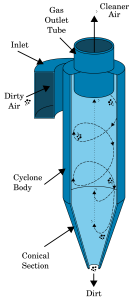 Cyclonic dust collectors have been around since World War II and the design hasn’t changed much since then. The physics of separation is simple and effective (they are also called pre-separators) and is based on centrifugal force. A collector use cyclonic action to separate dust particles from the incoming dirty air stream. In a typical cyclone, the dust gas stream enters at an angle and is spun rapidly. The centrifugal force created by the circular flow throws the dust particles toward the wall of the cyclone. After striking the wall, these particles fall either into a hopper, drum, or bag located underneath.
Cyclonic dust collectors have been around since World War II and the design hasn’t changed much since then. The physics of separation is simple and effective (they are also called pre-separators) and is based on centrifugal force. A collector use cyclonic action to separate dust particles from the incoming dirty air stream. In a typical cyclone, the dust gas stream enters at an angle and is spun rapidly. The centrifugal force created by the circular flow throws the dust particles toward the wall of the cyclone. After striking the wall, these particles fall either into a hopper, drum, or bag located underneath.
The most common types of centrifugal, or inertial, collectors in use today for concrete dust collection are single-cyclone separators. They create a dual vortex to separate coarse dust from fine dust. The main vortex spirals downward and carries most of the coarser dust particles towards the cone. When the airstream can no longer go any farther down the cone it reverse direction. The inner vortex, created near the bottom of the cyclone, spirals upward and carries finer dust particles and cleaner air to the final extractor.
Cyclonic dust collectors are purpose-built for the type of dust they will be collecting. And although they have no moving parts the engineering is critical to success. A cone that is too long will not allow the dust to drop. A cone that is too short will suck the collected dust right out again. A collector designed for concrete dust will not work well, if at all, for wood dust, and vice versa. The best-of-breed cyclones, used in factories and on large commercial projects, are custom-engineered to work in tandem with extractor vacuums having very precise airflow and water lift specifications. To operate effectively it is always best to procure equipment from the same manufacturer.
The Perfect Trifecta
Concrete Polishing Solutions (CPS) G-320 Grinder (left), combined with the Cat-5 Extractor Vacuum (middle) and Cat-5 Dust Interceptor (right). This industrial-grade, equipment trifecta dramatically increases performance and cost savings. The Cat-5 Extractor features a 20 hp, 400 CFM vacuum with 120″ of water lift that maintains suction in the toughest conditions. Both Cat-5 units feature a Longopac continuous bagging system: a cost-effective, disposable bagging system providing minimal downtime, easy clean-up and a safe working environment. All units feature heavy-duty welded frame construction with powder coated finish designed to withstand the toughest jobsite conditions and provide years of reliable service.
Premier Floor Care is an authorized CPS equipment distributor serving the San Francisco Bay Area. Contact us today for more information.
Notes:
- Warning: Grinding and polishing dry concrete releases dangerous silica dust into the air. Refer to OSHA regulations for proper procedures to protect exposed workers and decontaminate clothing and equipment.
Care and Maintenance of Vinyl Floors
/in Education, Industry News/by adminMany people are unclear about whether vinyl and linoleum are the same type of flooring. They’re not. It also doesn’t help matters that the sales staff at some flooring retailers tend to use the terms interchangeably. What is true is that both vinyl and linoleum are “resilient,” and both can come on a sheet roll (or in tiles), but the similarity basically ends there. Vinyl and linoleum flooring are very different building products in nearly every respect including: material composition, application, installation and especially in their respective maintenance requirements.
So Is My Floor Vinyl Or Linoleum?
A common problem people have with vinyl versus linoleum flooring is how to tell the two apart. A quick and easy way to confirm whether your floor is vinyl or linoleum is to apply the “Paperclip Test.” Straighten a paperclip and heat the end with a lighter for approximately five seconds (use a pair of pliers to avoid burning your fingers). Press the heated metal tip firmly down on the floor covering for approximately three seconds. Slowly pull up the paperclip. You will notice a small hole in the floor if it is PVC. If it is linoleum the area around the hole will be slightly blackened (the charring is due to the fact that, unlike vinyl, linoleum contains natural materials like cork and wood flour).
Vinyl, aka Polyvinyl Chloride (PVC), flooring is tough and can stand up to high traffic. It is commonly used in commercial facilities like public offices, schools, and retail stores. Vinyl is resistant to scouring with antiseptic, antifungal, antiviral and antibacterial solutions which makes it a popular choice in hospitals. Vinyl also has good chemical resistance to oil, grease, and alcohols (spill on aisle 8) and very good chemical resistance to dilute acids, dilute alkalis, and aliphatic hydrocarbons (methane, ethane, propane, butane, etc.). Commercial grade vinyl (VCT) can withstand extremely high traffic, even light forklift traffic (with polyurethane wheels). For this reason VCT is becoming more popular in machine shops and industrial manufacturing facilities where it can provide a measure of damage tolerance superior to that of epoxy paint. In short vinyl is a floor of many talents.
Tough Not Indestructible
Concentrated point loads caused by heavy display cases with hard steel casters, work benches or furniture with narrow legs, or any heavy object with a small resting footprint can and will permanently indent the floor.
Tip: Replace all single-wheel metal casters with polyurethane double wheel casters to better distribute the weight of heavy equipment.
Vinyl and linoleum are both economic and both have roughly the same lifetime value. Vinyl flooring typically costs about one to two dollars per square foot and last for approximately ten to twenty years. Linoleum costs about twice as much but lasts for roughly twenty to forty years. Two drawbacks with linoleum versus vinyl is that linoleum will start to fade over time showing its age, whereas vinyl will maintain its appearance to the very end of its service life. Linoleum is susceptible to moisture damage—in wet or humid environments such as bathrooms it’s not uncommon to see the edges curl up from the tub and baseboard. Waterproof vinyl on the other hand is moisture, mildew and mold resistant and never loses its shape.
A broad catalog of vinyl flooring options can be found in nearly every home improvement center or building supply store. In addition to being one of the most durable, versatile flooring materials available, vinyl flooring comes in a virtually unlimited variety of colors and patterns (even custom printed patterns). It’s no surprise then that PVC flooring is very popular for both residential home use and commercial facilities. When properly maintained vinyl floors will last for many years. By following the recommended maintenance program, dirt and grime are removed before they can mar the floor finish or cause abrasions and tears. This not only increases the service life of the flooring, it contributes to a safe healthy environment by reducing hazards and improving cleanliness. Regular cleaning protects the floor, protects your investment, and gives your business or home an attractive appearance.
Vinyl Care Dos And Don’ts
Dos
- Place a natural or colorfast mat at outside entries to catch tracked-in dirt and moisture.
- Sweep or vacuum regularly to prevent loose dirt from scratching your floor.
- Clean under furniture, in corners, and along baseboards.
- Mop with plain water first before using a commercial floor cleaner.
- Wipe up spills as soon as possible to avoid stains.
- For tougher stains, use a manufacturer approved floor cleaner or one of the green cleaning methods below.
- Place a sheet of plywood or particle board down any time you need to move furniture, appliances, or heavy equipment across the floor—this prevent scuff marks, tears, and other damage to the vinyl.
- For homes, consider placing vinyl coasters or felt protectors under furniture legs to safeguard against damage.
- For commercial facilities, consider placing floor protectors under racks with bare metal legs or use racks with plastic leg tips.
- For commercial facilities, replace equipment with single-wheel metal casters with double-wheel polyurethane casters.
Donts
- Never wet clean without first dry-mopping the floor to remove dirt, dust and hair.
- Never vacuum with a beater-brush attachment which can damage the floor finish.
- Never use full strength (undiluted) soap-based detergents.
- Never use “mop and shine” products, which may leave a dull film.
- Never use abrasive cleaners or scouring pads, such as steel wool, which can scratch your floor.
- Never use paste wax or solvent-based polishes.
- Never use an ammonia-based cleaning product which will break down the vinyl and cause cracks in the flooring.
- Never use a commercial cleaner other than one designed especially for vinyl floors.
- Never roll heavy equipment with single, metal-wheel casters across the floor.
Eco-Friendly Cleaning Tips
Use Plain Water
Start with plain water. Most of your floor care problems can be eliminated with just regular H20 and a mop. Remember to dry mop or vacuum first before wet mopping.
Clean Frequently
Over time dirt and grime, if left unattended, will ruin the finish of any flooring material. The key is to remove it before this happens. Heavy traffic will only accelerate the process.
Light Cleaning & Disinfecting
For light cleaning you can remove most dirt and grime with regular household items. Mix one cup of apple cider vinegar (to clean) or one cup of white vinegar (to disinfect) with a gallon of hot water. Damp mop the floor, rinsing the mop frequently with hot water. If your floor is especially dirty, try adding a few drops of liquid dishwashing soap (Dawn works well) to the mixture. Mop once with the soap mixture, then mop a second time with the vinegar and water mixture. For a nice finishing shine add a few drops of mineral oil to the vinegar and water solution.
Scuffs & Food Stains
While not every stain can be removed, vinyl holds up well to stains and most can be removed using common items found around the house, along with the help of a some elbow grease. For stubborn scuffs, spray some WD-40, or jojoba oil, on a clean towel and rub the area until the scuffs disappear. Afterward, make sure to clean the area thoroughly with the vinegar and water solution mentioned above to remove any traces of lubricant or oil. For food stains such as red wine, grape juice, mustard, ketchup, etc., make a paste using baking soda and water. Dip a soft, clean cloth into the paste and gently rub the stain until it disappears. Again, clean the area thoroughly afterward to remove any traces of baking soda.
Sticky Substances
Ordinary rubbing alcohol can be used to remove most oil-based adhesives such as the sticky remnants of black tape or duct tape. Alcohol also works well on lipstick, hair dye, and ink stains. Mineral oil will remove crayon, paint, and most marker stains. Use 60% acetone solution (typical nail polish remover) to remove nail polish stains. For tougher stains like permanent markers, you can use pure acetone or maximum strength nail polish remover available at CVS or Walgreens—acetone evaporates immediately but always test on a small area first.
Cost-Effectiveness
Floors that have been neglected over long periods of time with little or no maintenance can, and often do, suffer permanent damage. In such cases the only choice is to either live with the damage or replace the flooring. However, regular maintenance using one of the above green-cleaning methods with nothing more than common household items is not only environmentally friendly, it’s also a very cost-effective way to protect your floor throughout its service life.
Enjoy your floor!
Eco-Footprint
At this time, PVC building products are not nearly as eco-friendly as linoleum. Unlike vinyl, linoleum is made from all natural, highly renewable resources. Linoleum can be recycled and in fact is biodegradable. Contrast this with vinyl flooring, for which nearly half the components are derived from hydrocarbons, a diminishing, non-renewable resource.
Despite the reliance on oil-based derivatives, most of vinyl’s carbon footprint doesn’t come from the hydrocarbons used to make it, but rather from the immense amount of energy needed to separate chlorine from salt. In fact, 57% of a typical vinyl floor is derived from ordinary table salt! The remaining 43% is derived from hydrocarbon feedstock. But the good news is this is changing fast. Manufacturers are increasingly turning to a PVC production process using ethylene from sugar crops as an alternative to ethylene from oil or natural gas. So in the future, when you walk down a grocery aisle, you could be walking on a floor made entirely from salt and sugar. And the energy used to make it may come entirely from solar, wind or another form of alternative energy. Upshot: a completely zero carbon-footprint building product.
Recycling technology has also come a long way in the last ten years. Whereas used PVC building products were once hauled to the landfill, there now exist so called “vinyl take-back” schemes like Recofloor which can mechanically recycle waste vinyl flooring and installation off-cuts with reasonable ease to produce good quality recycling material which can be used to make traffic cones, signage, flooring, and a number of other useful commercial products. Nevertheless, while efforts to find ways to recycle PVC products are expanding the technology at this time is still limited and mainly in the experimental stage.
Upcoming Blogs
- Care And Maintenance of Linoleum Floors
- Disaster Recovery: Earthquake, Water & Fire Damage
Premier Floor Care is a leading commercial floor care provider serving the San Francisco Bay Area. Contact us today for more information.
Restroom Cleanliness: The Key To Repeat Business
/in Education/by adminIf you are like most people, at some point you’ve had the experience of using a public restroom that was untidy, unclean and filled with disagreeable odors. What impression of the business did that leave you with? Would you ever patronize that establishment again or recommend it to anyone else? For the vast majority of U.S. customers the answer is unequivocally no.
There is hard data to back this up. A survey conducted by Cintas Corporation of 1,011 U.S. adults ages 18 and older reveals that “94 percent of U.S. adults would avoid a business in the future if they encountered dirty restrooms.” 93 percent of those surveyed said the top three cleanliness items that would cause them to perceive a public restroom as dirty are:
| • Un-flushed toilets | 90 percent |
| • Odor | 89 percent |
| • Overflowing trash cans | 88 percent |
When asked what specific types of businesses they would avoid if they encountered dirty restrooms, U.S. adults reported the following:
| • Restaurants | 79 percent |
| • Hotels | 79 percent |
| • Healthcare Facilities | 77 percent |
| • Supermarkets | 50 percent |
| • Retail Stores | 45 percent |
| • Gas Stations | 45 percent |
| • Car Dealerships | 39 percent |
Customer Satisfaction
Whether you are a facility manager, store manager or operations manager, these are customer satisfaction issues that you simply can’t afford to ignore and need to take very seriously.
Consider a scenario where customer traffic in your stores or facilities dropped significantly due to unclean restrooms. You would no doubt find yourself in the uncomfortable position of having to explain why to senior management. Not good. The good news however is that such a scenario is entirely avoidable by implementing a full-service, comprehensive restroom cleaning and maintenance program.
Let’s define what constitutes “full-service, comprehensive” commercial restroom cleaning. The following restroom cleaning procedures (courtesy cleanfreek.com) are generally considered standard practice in the industry.
Safety Preparation
- Tag and separate mops, brooms and all cleaning equipment used for restrooms from that used in other parts of the facility to avoid cross-contamination.
- Make sure no customers are in the restroom before starting cleaning.
- Block the restroom door by propping it open with a door wedge, the cleaning cart, or a safety barrier.
- Place a closed sign on the door, the cleaning cart, or the safety barrier.
Standard Daily Cleaning Procedures
- Sweep up trash, dirt, and debris on the floor.
- Wipe down sink and fixtures.
- Clean around toilets and urinals.
- Empty garbage cans and replace liners where needed.
- Refill soap dispensers.
- Stock toilet paper and paper towel dispensers.
Weekly Cleaning Procedures
Weekly restroom cleaning is more thorough and consists of the above daily cleaning procedures plus the following:
- Use of an industry-certified germicidal, bactericidal, virucidal and fungicidal cleaning product.
- Clean, scrub and disinfect all interior and exterior surfaces of toilet, toilet seat, and urinals.
- Wipe down and disinfect all exterior surfaces, e.g., walls, panels, tiles, moulding, etc.
- Wipe down and disinfect all interior surface fixtures, e.g., door handles, light switches, countertops, partitions.
- Wipe down and disinfect sinks, faucets and handles.
- Clean mirrors with glass cleaner to remove any fingerprints and marks.
Monthly Cleaning Procedures
Monthly restroom cleaning consists of the above weekly cleaning procedures plus the following:.
- Replace all metered aerosol deodorizers and air fresheners.
- Replace the urinal blocks as necessary.
- Check that sink and floor drains are properly draining.
- Check with the store facility manager before using a drain cleaners – some caustic drain cleaners can damage plumbing.
- Notify store facility manager of any maintenance issues, e.g., broken door hinges, inoperable dispensers, clogged drains, etc.
Phew! While that sure seems like a comprehensive list of restroom cleaning procedures there’s something missing from this list that is vital to proper restroom maintenance. Namely, a thorough restroom “deep clean procedure.” If right now you are thinking “Isn’t cleaning all surfaces, fixtures and bowls with a germicidal cleaning product a deep clean procedure?”, the answer is no. And here’s why.
Over time dirt, grime, mold, mildew and germs accumulate in the various cracks, crevices and porous surfaces of a commercial restroom. Take a look around your restroom facility and inspect some of the more difficult to clean areas. Every door hinge, every fixture edge, every surface joint, and most notably every line of grout is an accumulation site for dirt and germs. Simply wiping down countertops, sweeping and mopping floors, even applying germicidal cleaning products will not remove dirt, germs and odor-causing bacteria from your restroom.
Did You Know?
“The majority of the [restroom] odor is actually created by odor causing bacteria that use urine as a food source. The more bacteria that are allowed to grow the stronger the odor. The odor causing bacteria can penetrate porous surfaces, grout, and even etched porcelain causing odor issues in restrooms if not maintained properly.”
— Nicole Livingston, R&D Technical Manager, Rochester Midland, Rochester, N.Y.
Now refer back to the table at the top of this article. Note how 89 percent of customers would consider a restroom dirty due to odors. The only way to remove these odors is with deep grout cleaning. Premier Floor Care has developed a proprietary pressure washing system designed specifically to “deep clean” commercial restroom floors, surfaces and fixtures.
Premier Floor Care is highly successful in preparing grocery stores and big box retail stores for customer appreciation days, gala events, and executive Immersion Walks, i.e., walkthroughs where senior executives examine every inch of the sales floor, display cases, and restrooms to gauge competitive advantage. Premier Floor Care has been the #1 vendor on the Safeway scorecard since it’s inception. We have received high praise from this grocery store chain for store cleanliness in Districts 4, 6, 7, and 9, and was again praised in a second Immersion Walk in District 4.
A key factor in achieving this rating was the quality of bathroom cleanliness. Premier has pioneered a special grout-cleaning, odor-eliminating process with a custom-built pressure washing system that leaves tile and fixtures sparkling clean for store customers.
Contact Premier Floor Care today for more information about our award-winning commercial floor care services and a free onsite consultation.
Water Conservation Is Not An Option
/in Education, Industry News/by adminPeople often ask “What makes Premier Floor Care ‘Premier’?” Here are three good reasons why this is true:
With California in its third year of the worst drought in recorded history we at Premier Floor Care are highly aware that water conservation is mandatory. Whether it’s commercial floor care, pressure washing, or carpet cleaning, all our processes are designed to conserve water. Read more
About Us
Since 2000 Premier Floor Care has provided clients with unsurpassed customer service and expertise in commercial floor care. Our team has a vast array of experience in retail store management, quality assurance management, employee management, and knowledge of the latest cleaning technologies.
We serve all nine counties of the San Francisco Bay Area. Our well-trained staff, combined with our reliable state-of-the-art equipment and innovative cleaning techniques, enable us to handle the toughest jobs in a time efficient manner.
Read More About Our Award Winning Service
Contact Us
Premier Floor Care, Inc.®
Address:
5179 Lone Tree Way
#557
Antioch, CA 94531-8689
Email:
services@premierfloorcare.com
Phone:
(925) 679-4901
FAX:
(925) 679-4908
Contact us for more information and a free consultation
Site Map
Member


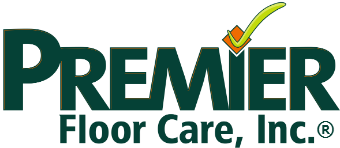
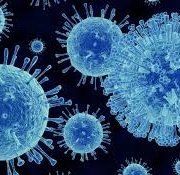
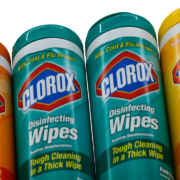

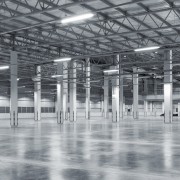
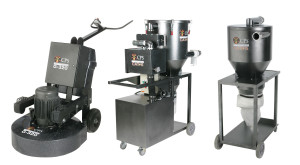
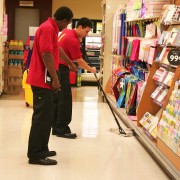
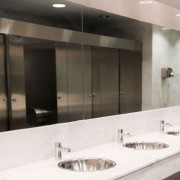
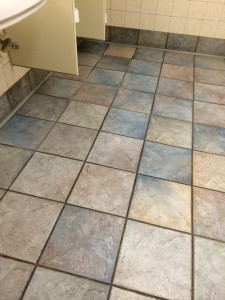
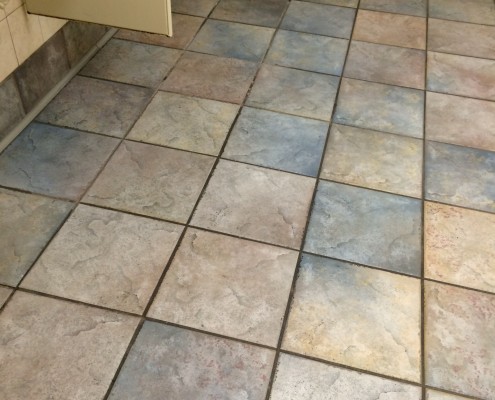
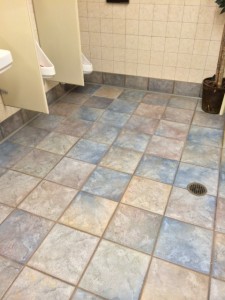

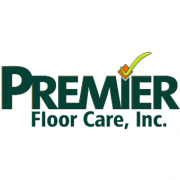
Follow Us